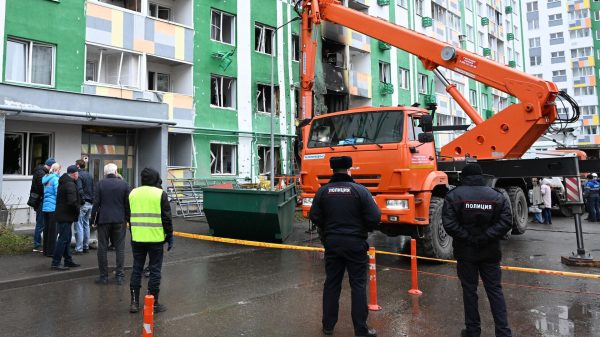Last summer, as people began marching for racial justice across the world, companies were having their own internal racial reckonings. Brands began lining up to prove their anti-racist credentials. Employees, emboldened by the moment, began airing their companies’ dirty laundry in public. Commitments to diversity were made; tweets were sent; pledges to do better abounded; goals and targets were set.
And the numbers did soar. Enrollment for Yale University’s diversity training program increased threefold by September 2020. And while the early months of the pandemic saw job postings relating to diversity and equality (such as diversity officers and recruiters) plunge by 60%, the effect was almost completely reversed one month into the protests.
Today, the Diversity Equity Inclusion (DEI) business sector is booming, raking in $8bn a year – but has it translated into results?
You can’t train away bias
To begin with, a guiding principle of most diversity training – that if you make people aware of their biases, they can learn to suppress them – seems to be flawed.
“There’s pretty wide agreement that you can’t train away bias. Biases are mostly subconscious, and exposure to training can sometimes activate them rather than help to suppress them,” says Dr Frank Dobbin, a professor of social sciences at Harvard.
Dobbin has been studying diversity training for years alongside, joining a host of other academics who have written over a thousand papers, showing that most training simply doesn’t work. Whether in the field observing companies going through training or in the lab, his research shows that companies using anti-bias training rarely see improvements in the diversity of their workforce afterward and that even when training has a positive effect, it is usually quickly forgotten. Sometimes, it can have even the opposite of the intended effect.
A lot of our research shows training makes the dominant group – usually white men – feel threatened and fearful of being excluded
Alexandra Kalev
“A lot of our research shows training makes the dominant group – usually white men – feel threatened and fearful of being excluded. They fight back instead of internalizing [the training]” says Alexandra Kalev, a professor of social sciences at Princeton.
So why do companies keep signing up for it? Dobbin believes it’s usually a kneejerk reaction, either to something that has happened within the company – like the racist behavior of an employee that gains widespread attention – or something in the wider environment – like the protests this past summer. The company can put details about the training on their website, release a PR statement, and be done with it.
“The easy thing to do is to put everybody through diversity training. Because the takeaway from that is, ‘There’s nothing wrong with our systems. There’s nothing wrong with our values, we happen to have hired a few rogue employees who act on their biases, and we’re going to train those biases out of them,’” Dobbin explains.
“That’s easier. And although it’s expensive, it’s cheaper than the hard work of looking closely at how does the company recruits.”
The backfire effect
“To be less white is to be less oppressive, less arrogant, less certain,” a set of slides at a diversity training by Coca-Cola last month read. The course had been accessed on LinkedIn Education, which subsequently pulled the material from its library.
The “whistleblower” who leaked the slides calls herself an “unwoke activist” and is a vocal advocate of banning critical race theory – so perhaps her resistance was to be expected. But if anti-racism training only speaks to the converted, can it really achieve its aims?
“It may not be fair that you can’t start this process by getting people to admit they are biased. But people don’t want to think they are biased. And we just don’t see any evidence that has ever worked,” says Dobbin.
Managers feel they are being blamed for the systems that produce inequality and employment outcomes, which they don’t think are their fault, and the jargon can be alienating.
“It’s very difficult to talk about white privilege when you don’t know that you have it,” says Kalev, talking about the tendency for newer anti-bias training to include technical sociological terms – such as in the aforementioned training at Coca-Cola, which utilized phrases from the book White Fragility by Robin DiAngelo.
Bad outcomes include creating suspicion that new hires are less competent because trainers focus on talking about “diversity” rather than talent or excellence, or that people walk away thinking there is nothing they can do about racism in the workplace.
“In many cases, trainers don’t want to sound like they are finger-pointing. So you may notice them talking in a ‘we’, with the trainer giving examples of their own biases. That has the paradoxical effect: people think ‘this is normal, so I don’t need to change it’,” she explains.
Even with the best diversity training possible, nothing will be achieved without changing existing structures that perpetuate discrimination. “Racism at work is ingrained in all levels of the business. It’s hardly on managers with individual biases,” explains Kalev.
“Even with the best training in the world, if the company continues to recruit in predominantly white, elite colleges, and they continue to rely on spontaneous mentoring to happen, how can the training make a difference?” asks Kalev.
What works
The good news is that hiring equitably doesn’t require radical restructuring, lots of cash or huge initiatives. There are some simple and well-evidenced interventions that do work.
Training needs to be voluntary, so that employees don’t feel strong-armed into it, and developed in-house, so that it responds to the specific needs of the organization. It should not focus on negative consequences – particularly legal repercussions for the company – or else employees tend to see it as back-covering.
Companies can start by looking at the data: on hiring, promotion and discharge trends, by job type, in recent decades. “Create taskforces to look at certain areas of the company, who can provide feedback on the results, and see what the bottlenecks are,” explains Dobbin.
Once that information is found, tried and tested methods can create change. Having a system where managers train people to move up through the ranks, rather than relying on an ad-hoc promotion system works well, particularly for women. Putting in “special recruitment structures” – which basically means you no longer recruit exclusively at historically white colleges, but also approach historically Black universities, or engineering programs with lots of women in them, also works well.
Mentorship programs that are open to everybody – so that women and people of color get mentors even if they’re at the lowest levels of a firm – are also a good way to ensure talent can rise.
“We know what kinds of systemic changes promote diversity. Pointing the finger of blame at managers, and trying to adjust their individual bias, they just don’t work. So, to me, it’s just, it’s crazy that companies are still doing these things,” explains Dobbin.
So is diversity training just a money-maker, I ask Kalev?
“Most diversity training doesn’t work. Most of it is not for free. So you can do the 1+1,” she says.





















































Свежие комментарии